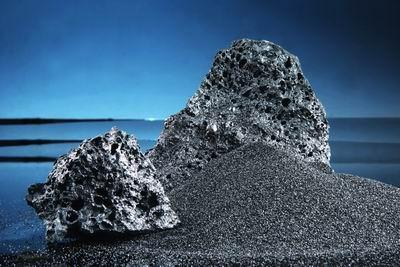The main use of boron carbide B4C powder
Overview of Boron Carbide B4C Powder
Boron carbide B4C powder has the characteristics of low density, high strength, good high temperature stability, and good chemical stability. Therefore, it is widely used in wear-resistant materials, ceramic reinforcement phases, especially lightweight armor, reactor neutron absorbers, etc. In addition, compared with diamond and cubic boron nitride, boron carbide is easy to manufacture and low in cost, so it is more widely used. In some places, it can replace expensive diamonds, usually used for grinding, grinding, drilling, etc.

Boron carbide B4C powder has the characteristics of high purity, small particle size distribution, and large specific surface area. B4C powder is a synthetic superhard material with a hardness of 9.46; a microhardness of 56-6200Kg/mm2, a ratio of 252g/cm3, and a melting point of 2250 degrees Celsius.
Application of Boron Carbide B4C Powder
1. Control nuclear fission
Boron carbide B4C powder can absorb a large number of neutrons without forming any radioactive isotope. It is an ideal neutron absorber in nuclear power plants. The neutron absorber mainly controls the rate of nuclear fission. Boron carbide is mainly made into controllable rods in the field of nuclear reactors, but sometimes it is made into powder due to the increase in surface area.
During the Chernobyl nuclear accident in 1986, Russia dropped nearly 2,000 tons of boron carbide and sand, which ultimately prevented the chain reaction in the reactor.
2. Abrasive
Because boron carbide B4C powder has been used as a coarse abrasive for a long time. Because of its high melting point, it is not easy to cast into artificial products, but it can be processed into simple shapes by smelting the powder at high temperature. Used for grinding, grinding, drilling and polishing hard materials such as cemented carbide and gems.
3. Paint
Boron carbide B4C powder can also be used as a ceramic coating for warships and helicopters. It is light in weight and has the ability to resist the penetration of the hot press coating by the armor-piercing projectile, forming a complete defense layer.
4. Nozzle
In the munitions industry, it can be used to make gun nozzles. Boron carbide, extremely hard and wear-resistant, does not react with acid and alkali, high and low temperature resistance, high pressure resistance, density ≥2.46g/cm3; microhardness ≥3500kgf/mm2, bending strength ≥400MPa, melting point 2450℃.
Because the boron carbide B4C nozzle has the above-mentioned characteristics of wear resistance and high hardness, the boron carbide sandblasting nozzle will gradually replace the known sandblasting nozzles such as cemented carbide/tungsten steel and silicon carbide, silicon nitride, alumina, and zirconia.
5. Other
Boron carbide B4C powder is also used to make metal borides, smelt sodium boron, boron alloys and special welding.
Price of boron carbide B4C powder
The price of boron carbide B4C powder will vary with factors such as production cost, transportation cost, international situation, exchange rate, and random changes in market supply and demand for boron carbide B4C powder. Tanki New Materials Co., Ltd. aims to help various industries and chemical wholesalers find high-quality, low-cost nanomaterials and chemicals by providing a full set of customized services. If you are looking for boron carbide B4C powder, please feel free to send an inquiry to get the latest price of boron carbide B4C powder.
Supplier of Boron Carbide B4C Powder
As a global boron carbide B4C powder supplier, tanki new materials Co., Ltd. has extensive experience in the performance, application and cost-effective manufacturing of advanced engineering materials. The company has successfully developed a series of powder materials (titanium diboride, silicon hexaboride, molybdenum boride, iron boride), high-purity targets, functional ceramics and structural devices, and provides OEM services.
留言
發佈留言